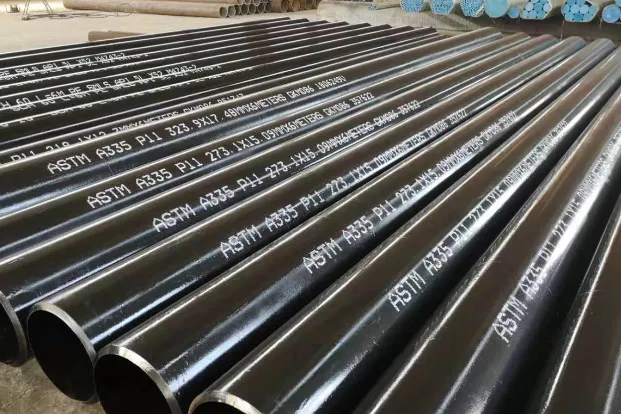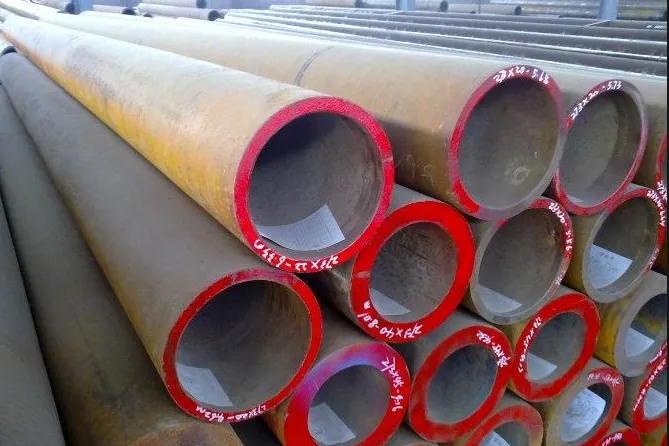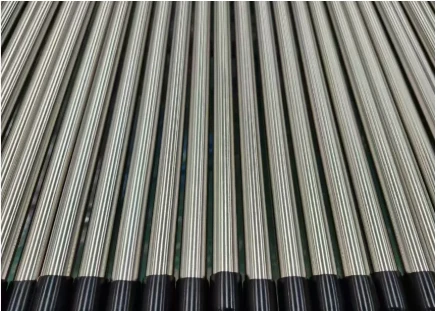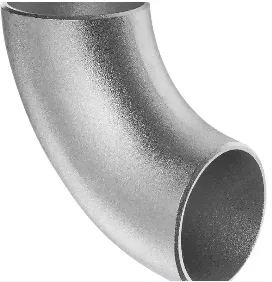ASTM A335 PIPE Material and grading
Steel grade: The standard includes P1, P2, P5, P9, P11, P12, P22, P91 and other steel grades. Different steel grades have differences in chemical composition and performance to meet the needs of different high temperature conditions.
Chemical composition: Taking P11 steel grade as an example, its main chemical composition is roughly carbon (C) content 0.05%-0.15%, manganese (Mn) content 0.30%-0.60%, silicon (Si) content 0.50%-1.00%, chromium (Cr) content 1.00%-1.50%. Molybdenum (Mo) content 0.44%-0.65%, etc. P91 steel grade contains higher chromium (Cr) and molybdenum (Mo), but also added vanadium (V), niobium (Nb) and other elements to improve its high temperature strength and creep resistance.
A335 Alloy steel pipe Mechanical property
Tensile strength: The tensile strength requirements of different steel grades are different. For example, the minimum tensile strength of P11 steel grade is generally 415MPa; The minimum tensile strength of P91 steel grade is 585MPa.
Yield strength: The minimum yield strength of P11 steel grade is usually 205MPa; The minimum yield strength of P91 steel grade is 415MPa.
Elongation: The standard also has provisions on the elongation of the steel pipe, generally requiring that the longitudinal standard distance is 200mm or 4D (D is the outer diameter of the steel pipe), the elongation is not less than 22%, etc., the specific value varies due to steel grade and pipe diameter and other factors.
A335 Alloy steel pipe Manufacturing process
Smelting method: The material of steel pipe is usually smelted by open furnace, electric furnace or oxygen converter, and the process of refining outside the furnace can be used if necessary to ensure the purity and performance of steel.
Manufacturing method: The seamless rolling or forging process is used to ensure the internal quality and dimensional accuracy of the steel pipe. In the manufacturing process, the steel pipe needs to be heat treated, such as normalizing, tempering, etc., to improve its organizational structure and performance.
Inspection and test
Appearance inspection: The surface of the steel pipe should be smooth, without obvious cracks, folding, scarring and other defects, and the surface roughness should meet the standard A335 Alloy steel pipe requirements.
Dimensional inspection: The outer diameter, wall thickness, length and other dimensions of the steel pipe are strictly measured, and the allowable deviation should be within the range specified in the standard. For example, the allowable deviation of the outer diameter is generally ±1%.
Non-destructive testing: Usually ultrasonic testing, X-ray testing and other methods are used for non-destructive testing of steel pipes to detect whether there are internal defects. For high pressure and high temperature steel pipes, 100% non-destructive testing is required.
Physical and chemical properties test: including tensile test, impact test, hardness test, etc., to verify whether the mechanical properties of the steel pipe meet the standard requirements. Chemical composition analysis is also required to ensure that the chemical composition of the steel pipe is within the specified range.
-
Cangzhou Yulong Steel Co., Ltd.
-
Teléfono:
+86 13303177267 -
Correo electrónico:
admin@ylsteelfittings.com
- inglés
- árabe
- italiano
- español
- portugués
- alemán
- casco
- persa
- grego
- francés
- ruso
- polaco
- tailandés
- indonesio
- vietnamita
- Zulú
- coreano
- uzbeco
- non
- serbio
- malaio
- ucraíno
- Gujarati
- crioulo haitiano
- hausa
- hawaiano
- hebreo
- Miao
- húngaro
- islandés
- igbo
- irlandesa
- xaponés
- xavanés
- Kannada
- Khmer
- Ruandés
- africano
- albanés
- amárico
- armenio
- azerbaiyano
- vasco
- bielorruso
- bengalí
- bosníaco
- búlgaro
- catalán
- Cebuano
- China
- China (Taiwán)
- corso
- croata
- checo
- danés
- Esperanto
- Estonio
- finés
- frisona
- galego
- xeorxiano
- kurdo
- Kirguises
- TB
- latín
- letón
- lituano
- luxemburgués
- macedonio
- Malgashi
- Malayalam
- maltés
- maorí
- Marathi
- mongol
- Myanmar
- nepalí
- noruegués
- noruegués
- occitano
- Pashto
- holandés
- Punjabi
- romanés
- samoano
- Gaélico escocés
- inglés
- Shona
- Sindhi
- cingalés
- eslovaco
- esloveno
- somalí
- sundanés
- suahili
- sueco
- Tagalo
- taxico
- Tamil
- tártaro
- Telugu
- turco
- turcomano
- Urdú
- uigur
- galés
- Axuda
- yiddish
- ioruba

Escribe aquí a túa mensaxe e envíanolo
Related News
-
May . 21, 2025Why API 5CT Pipes Are Critical for Deepwater and Shale Gas Drilling?In the high-stakes arenas of deepwater and shale gas drilling, where extreme conditions and complex geological challenges prevail, the reliability of drilling components can make or break an entire operation.
-
May . 21, 2025The Role of Butt Weld Tees in Sustainable Water Treatment InfrastructureIn an era where environmental consciousness drives innovation, the development of sustainable water treatment infrastructure has become a global imperative.

















